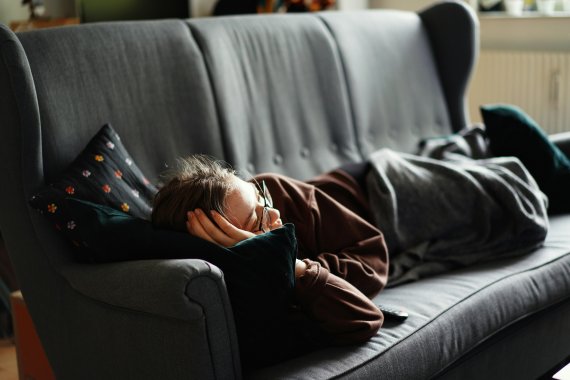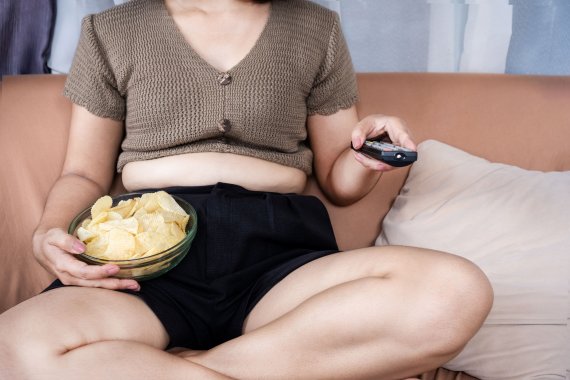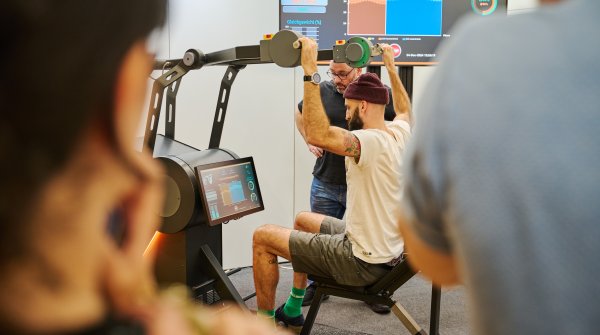The WHO report establishes that 31% of adults are physically inactive. It's a crisis that's having an irreversible impact on global health, mental well-being, and the economy. This sedentary lifestyle is a ticking time bomb & costs of inactivity are resulting in increased healthcare expenses. The outdoor & sporting industry has identified this crisis in a nick of time, resulting in a joint approach that inspires people to move and play.
- Nearly 1.8 billion adults across the globe are physically inactive. You may feel shocked to learn that inactivity is the fourth biggest risk factor for mortality. It contributes to a whopping 3.2 million annual deaths!
- Women are found to be more inactive than men, and their activity levels decrease rapidly after 60 years. What about the younger population? An earlier report indicates that 81% of people aged 11-17 years are not active enough to be healthy.
The level of physical inactivity varies across regions. In high-income nations, it is more than double compared to low-income countries. Dr. Fiona Bull, head of the Physical Activity Unit at WHO, adds context: "These disparities aren't just statistics. They represent real people facing real barriers to physical activity. Our challenge is to make movement accessible and appealing across all demographics."
An average American teenager has a screen time of more than 8 hours a day, standing in 2024. We're dangerously close to becoming the obese Axiom Humans of Wall-E bound to our smartphones and laptops. Habitual physical inactivity can be attributed to multiple factors.
Urbanization:
Urbanization first set the domino effect in motion. Skyscrapers, malls, offices, roads, flyovers, etc., reduce green spaces and recreational areas and hinder outdoor activities.
Technology:
Technological advancements have led to increased inactivity. Food, information, entertainment, data, cleaning services, vehicles: everything is available at the touch of a button!
Work-Life Imbalance:
We’re devoting longer hours to work and education, reducing engagement in physical activities. Economic conditions like inflation and recession lead people to join a rat race. There’s no time to think about health or work-life balance.
Lockdown:
The COVID-19 pandemic further triggered the situation and blurred the line between personal and professional lives. Lockdowns and restrictions led to reduced opportunities for physical activity. Even after the lockdown was lifted, people continued working or studying from home.
Inactivity and a sedentary lifestyle have been contributing to obesity, heart disease, and diabetes. Healthcare costs have been surging, with an additional loss due to productivity drop. Individuals, as well as the governments responsible for public healthcare, are affected by this. It also affects businesses, with the sporting goods industry suffering a massive hit. It is now in the face of formidable challenges.
Reducing Revenue:
The demand for traditional equipment is on a decline, negatively affecting their sales and profits. Manufacturers and retailers are coping with financial strain by resorting to layoffs and store closures.
Inventory Surplus:
Companies and shops are often left with a stock of unsold products due to poor demand. They’re forced to offer steep discounts for stock clearance or liquidate inventory at a loss, hurting profitability.
Innovation Stagnation:
Research and development to innovate and introduce products need financial support. With revenues dwindling, a slowdown in R&D and the introduction of new products is affecting customer retention. WFSGI CEO Emma Zwiebler doesn't mince words: "This is a full-blown global health crisis that demands all hands on deck - especially from our industry. It's time we shift from selling products to selling lifestyles."

Sports goods companies realize that they must work towards combating inactivity. It’s time to adapt to the changes and innovate accordingly. They plan to encourage greater physical activity and engagement in sports through new product lines and strategies. This includes educating people about alternative indoor exercise and physical activity options. The World Federation of the Sporting Goods Industry (WFSGI) has taken the initiative to bring together industry leaders like Nike, Adidas, ASICS, and more. This joint force aims to empower women, forge industry collaboration, and seek government support. As ISPO Executive Director of Consumer Goods Tobias Gröber mentioned, "This fight can’t be tackled by one single institution alone, but we all need to team up."
One of the areas they are focusing on is awareness. They aim to scale up knowledge sharing and best practices around interventions to drive behavior changes. They are also building a movement with influencers from the sports, health, and education sectors. The idea is to make a noise around adolescent inactivity data, advocating for the importance of physical activity at an early age. The industry is committed to collaborating with the WHO to support the implementation of the Global Action Plan on Physical Activity (GAPPA). It is a movement to improve physical activities and reduce health problems by 2030.
According to WFSGI Chair Andy Rubin, "...despite being competitors in business, we are coming together to share our expertise on consumer behavior and engaging people in community sports and physical activity. We are all in this business to help people be more active and develop a lifelong passion for sport and activity and the benefits."
ISPO's Gröber sees the challenging situation positively: "The growing inactivity levels across the global population are a substantial threat and opportunity at the same time for the sports industry. If not the sports industry, who else has the natural remedy to support governments, institutions, and individuals in their fight against inactivity?"
ISPO plans to implement the following in an attempt to support the government, organizations, and individuals:
- Integrating the subject of fighting against inactivity into its platforms
- Sharing best practices and use cases to drive attention and urgency
- Connecting experts, policymakers, and institutions to create a team
- Spreading awareness through its global communication channels.
According to WFSGI’s Zwiebler, the idea is to make people recognize the shocking reality. She mentions how WFSGI wants to draw attention to "the risk it poses to a sustainable future and the impact on future generations in terms of public health. "She emphasizes on why it’s urgent for WFSGI and its members to support the WHO in its attempt to reduce inactivity levels. "The more ill people we have, the more vulnerable they are to the impact of climate change."
Other federations across the globe are stepping up to make this collaboration a success. FESI (Federation of the European Sporting Goods Industry) Secretary General Jérôme Pero mentions working to reduce the disparities in physical activity levels, particularly among women. Pero says, "We are committed to leveraging our collective expertise to promote active lifestyles and ensure that everyone, regardless of gender, has the opportunity to benefit from physical activity." Additionally, JASPO (Japan) Chairman Motoi Oyama: "I am cooperating with the government and academic societies to raise awareness of the importance of physical activity."
While talking about helping people of all ages can take to improve their physical and mental health, Health and Fitness Association President and CEO Liz Clark says that the federation "is working to improve youth and adult access to sports and physical activity programs, such as gyms and exercise classes, as well as to promote individual exercise and group activities."

The leading names in the sports goods industry are now employing innovative tactics to address the global inactivity crisis. This is helping them position, for success in a changing market that’s prioritizing overall health and wellness despite the lack of healthy activities. They are investing in significant changes, innovating products, and collaborating with other industries to change the way people think about sports in the following ways:
Product Innovation and Sustainability:
- Products that cater to different fitness levels, interests, and skills
- Innovations that make physical activity accessible, enjoyable, and rewarding
- Home fitness equipment like desk cycles and dumbbells that are compact and light
- Smart fitness wear and gear for feedback, tracking, and effective movements
- Active furniture and workstations like standing desks, balance boards, desk cycles, etc.
Technology and Digital Platforms:
- Mobile apps with personalized training plans
- AI-backed workout gamification with challenges and rewards for a fun experience
- Wearable devices and smart equipment for connected fitness
- Virtual Reality to simulate outdoor activities for interactive exercising
- Social fitness challenges to connect people with resources and communities
- Subscription-based fitness services like apps, online classes, trainer guidance, etc.
Community Engagement and Partnerships:
- Promotional collaborations with educational institutions, community groups, etc.
- Support for physical education and sports development programs
- Advocacy for increased investment in physical education
- Community-based fitness platforms to make exercise a social activity
- Platforms and apps focused on holistic physical and mental health improvement
Awareness Campaigns:
- Collaborations with health organizations, policymakers, and industry leaders
- Researching and sharing insights on the benefits of movement
- Spreading awareness through brand platforms to leverage their reach and influence
The surge in chronic inactivity is a pressing issue, demanding a collective response from the outdoor & sporting industry. Brands are innovating products, fostering community engagement, and leveraging technology to inspire healthier lifestyles. Collaborative efforts are crucial in tackling this crisis. Sports companies and federations like ISPO intend to combat inactivity and tap into new opportunities for growth and reinvention.
To stay informed and explore collaboration opportunities, engage with ISPO's platforms. Join the movement for a more active tomorrow.
- Awards
- Mountain sports
- Bike
- Fitness
- Health
- ISPO Munich
- Running
- Brands
- Sustainability
- Olympia
- OutDoor
- Promotion
- Sports Business
- Textrends
- Triathlon
- Water sports
- Winter sports
- eSports
- SportsTech
- OutDoor by ISPO
- Heroes
- Transformation
- Sport Fashion
- Urban Culture
- Challenges of a CEO
- Trade fairs
- Sports
- Find the Balance
- Product reviews
- Newsletter Exclusive Area
- Magazine









